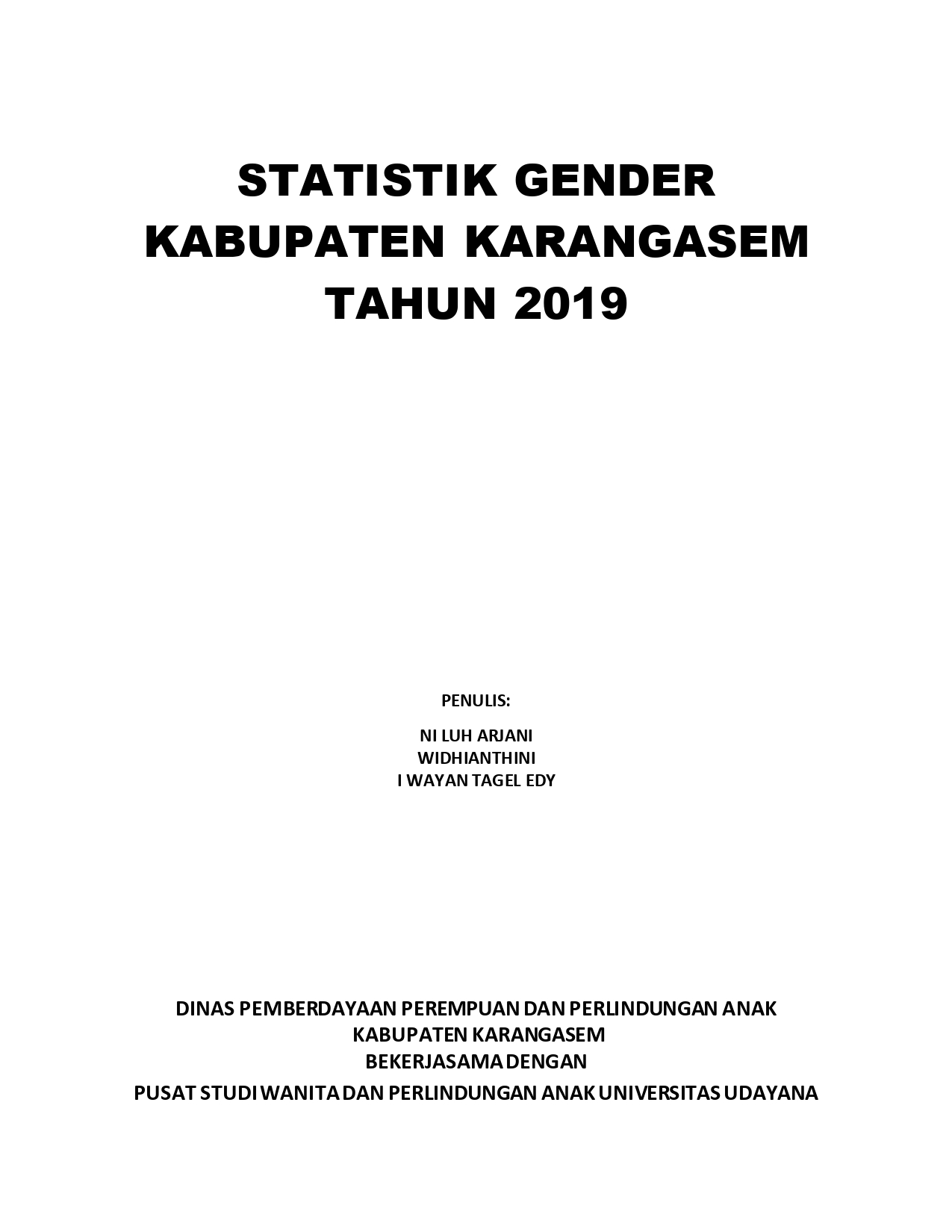
GENDER STATISTICS OF KARANGASEM DISTRICT, 2019
NI LUH ARJANI; WIDHIANTHINI; I WAYAN TAGEL EDY
ISBN : - Published : 2019
Abstrak
Historically, efforts to fight for gender equality and women's empowerment have been carried out by the Indonesian government since the 70s, which began with the formation of a young minister for women's role (UPW) in 1978 which has now been transformed into the State Ministry for Women's Empowerment and Child Protection . Before the formation of this institution, feminists both in the western world and in Indonesia were concerned about the fate of disadvantaged women compared to men. In Indonesia, one of the fighters for the fate of women who is familiar to the community is Raden Ajeng Kartini. R.A Kartini's struggle did not stop even though she was gone, her ideals were followed up by other Indonesian women leaders who shared a vision similar to Kartini's like R.A Sutinah Joyopranoto, Rr, Rukmini and others.
The manifestation of the post-Kartini Indonesian women's movement is the formation of various women's organizations whose vision is to improve the status of women through various efforts such as improving education and skills, legal protection and others. In the following decade this women's organization held its first women's congress on December 22, 1928 in Jogyakarta and this was a very important milestone for the movement of Indonesian women. The government's commitment to fight for the fate of women continues. Through the ministry institutions that have been formed at the central level and women's empowerment institutions in the regions both in the form of bodies and offices, various programs have been implemented to the community. The initial approach implemented at that time was women in development / WID because at that time it was realized that women were a valuable human resource so women who were marginalized in their positions needed to be included in development.
From the development approach related to women's empowerment as mentioned above, it also seems to be ineffective in realizing gender equality and justice. Therefore, other efforts were also made to accelerate the realization of the vision of the development of women's services. In 2000 along with the establishment of the MDGs agreement, the Indonesian government adopted a gender mainstreaming strategy (PUG) which was legitimized through Presidential Decree No. 9/2000 on implementing gender mainstreaming / gender mainstreaming strategies. This strategy is a strategy to integrate gender issues in every development planning from planning, implementation to monitoring and evaluation. Therefore, this strategy is basically aimed at policy makers / development programs / activities so that they can and are able to develop gender responsive programs / activities.
To be able to apply this strategy properly and correctly, the important thing that program drafter must know is to understand the techniques of gender analysis (TAG). Gender analysis is an analysis tool that can help planners analyze a policy / program whether it is gender responsive or not. Using gender analysis can be identified in terms of what gender gaps still occur, whether in access, participation, control or benefits. If the gap can be correctly identified, the program that will be compiled will automatically be on target.
Meanwhile, the important thing that must be available to support the application of gender mainstreaming strategies and gender analysis techniques is the existence of sex-disaggregated data. Without this data, gender analysis cannot be done because the existence of the data becomes the main foundation in conducting gender analysis and in preparing gender responsive planning. Therefore, the preparation of a gender statistical profile book in Karangasem District is very important.
In full, this book describes various development indicators such as education, health, economy, politics, and others. From the results of the study conducted it appears that there is still a gender gap that is quite prominent in several education indicators such as the NER and APS. In the APM, the gender gap is prominent in the elementary and high school education levels, while in the APS it appears in the elementary, junior high and high school education levels. The existence of teachers appears to be only PAUD teachers that are dominated by women, while elementary, junior and senior high school teachers are dominated by men. The number of repeat classes in both elementary and junior high schools is dominated by boys.
In the health sector, there was a decline in birth rates in 2018, while in relation to infant health, 175 males were still found in 2017 and in 2018 they dropped to 69 children. While the existence of general practitioners is still dominated by men, and dentists are mostly female
